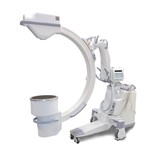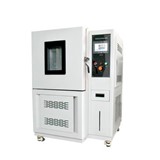Environmental disinfection using the right product, process and proof of compliance, is critical. A sporicidal disinfectant based on Accelerated Hydrogen Peroxide (AHP) addresses the age old dichotomy: choosing a powerful disinfectant that kills bacterial spores but has a good safety profile.
C. difficile is a Gram positive bacillus transmitted by the faecal-oral route. Healthy individuals become asymptomatic carriers. But after antibiotic administration, the vegetative C. difficile bacillus proliferates, forming spores. The patient then manifests symptomatic C. difficile infection (CDI) and sheds spores faecally.
The spores adhere to linen, fingertips and surfaces, from where they are transferred. Medical treatment of CDI involves another antibiotic, vancomycin, and surgical treatment is associated with poor outcomes. Prevention is the best treatment.
Disinfectants are designed to kill. Yet paradoxically they must be safe for surfaces and safe for users. Accelerated Hydrogen Peroxide (AHP) based Disinfectants cleans surfaces and kills C. difficile spores in one-step.
AHP does not bleach or degrade surfaces. It disinfects without creating destructive microcracks that harbour pathogens. And unlike quaternary ammonium (quat) chemicals, it does not leave a residual buildup on surfaces.
AHP biodegrades to just oxygen and water, leaving no residual active for C. difficile to interact with. This is important because prolonged exposure to low levels of disinfectant residue are thought to be necessary for organisms to develop resistance.
AHP is an oxidiser. It interacts with micro-organisms through multiple modes of action. Even if a bacterium could develop resistance to one route of attack, it is unlikely that it could evolve resistance to multiple modes of attack simultaneously.
Some C. difficile strains are able to form a biofilm matrix that allows them to communicate and evolve. Bacteriae within biofilms are more resistant to high levels of vancomycin, giving them significant intractability. Biofilm occurs on surfaces that are constantly bathed in fluid (traditional biofilm in sinks and drains) and on cyclically wet and dry surfaces (“buildup biofilm” on endoscopes and ultrasound probes).¹ Thus choosing the right sporicide is critical. GE Healthcare recently approved AHP for ultrasound probes disinfection, illustrating its suitability on valuable surfaces.
Remember the “3Ps” of disinfection:
- The right product: An AHP based disinfectant that kills C. difficile quickly without damaging surfaces
- The right process
- Proof: Validate disinfection with a fluorescent ink audit tool
45% of the people who enter a patient room are Nurses. 23% are visitors. The patient’s bed rail is touched up to 256 times per day by different people.3 Yet it is disinfected only once. And in many cases, probably not at all. Thus we should not be surprised that high touch surfaces in the patient zone contribute to infection risk. It follows that more frequent disinfection at the point of care is important if we are to lower HAI rates and optimise patient outcomes.
For more information on how Diversey can help you deliver an optimal cleaning and disinfection program please contact us.






-205x205.jpg)
-205x205.jpg)







-205x205.jpg)
